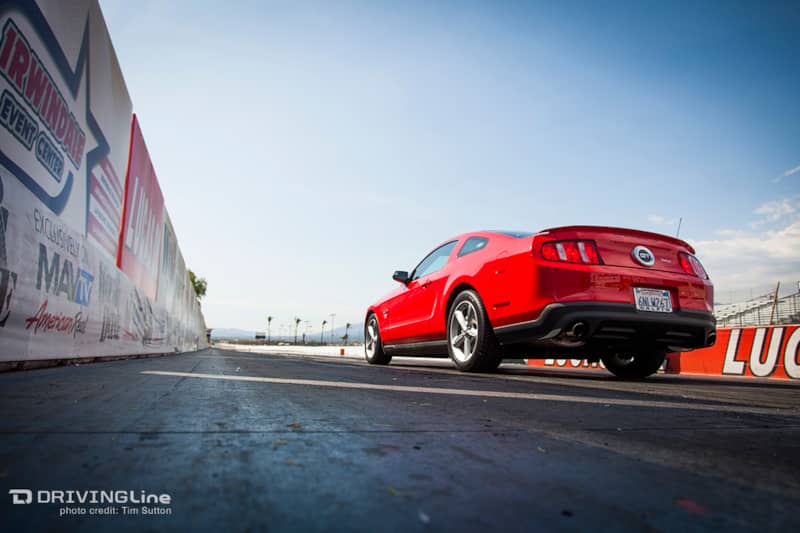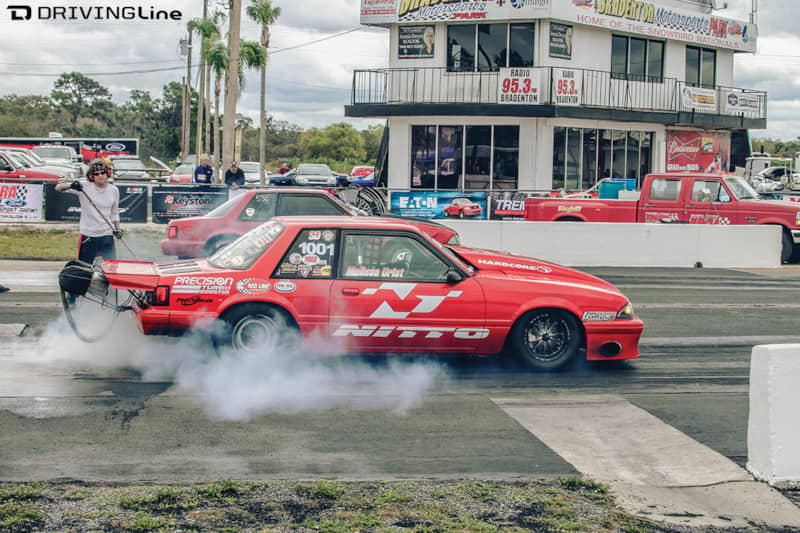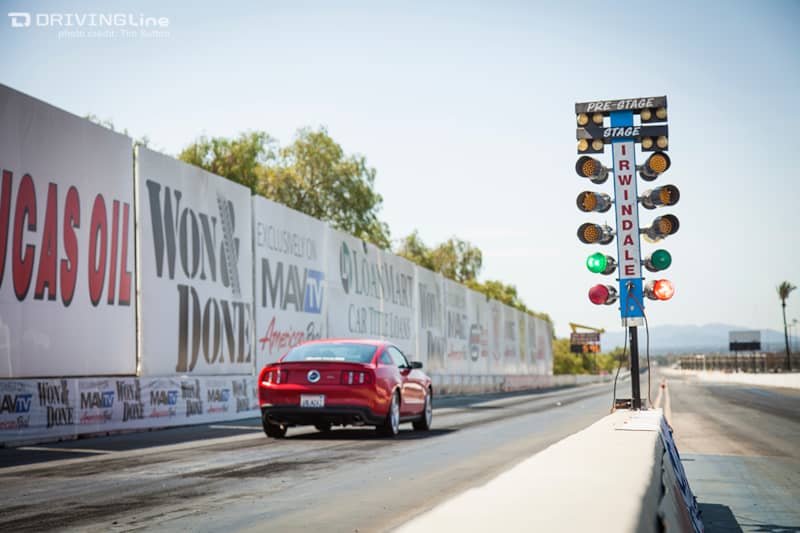Drag Racing 101: Understanding the Basics of 1320 Racing
Chances are, if you’re a car enthusiast, you’ve participated in at least one stoplight race (or more) in your lifetime. While it’s certainly frowned upon (don’t worry; we aren’t here to school you on the legalities and dangers), you have alternatives, which is to do it legally at your local drag strip. It's easy to forget how far drag racing has evolved in 60+ years since the car-crazy '50s got everything going. The early drag strips were funded largely by fraternal social groups, like the Elks or the Lions as a solution to rampant street racing and all the trouble that was often the result. The goal was to get the speed-obsessed kids off of the streets and into a better and safer venue where they could feed their compulsions without danger to the general public. It worked, and drag racing became hugely popular. Car clubs now had a place to settle their beefs and once the flag dropped, loudmouths were forced to put up or shut up. And not much has changed. For the minority of you out there who have never tried drag racing, nor know the rules involved, here’s a breakdown of how it works in our Drag Racing 101: 
What Is Drag Racing?
A drag race is a competition between two vehicles racing side by side in a straight line for a distance of a quarter-mile (sometimes it’s an eighth-mile), held on a monitored drag strip/racetrack – and in most scenarios, whoever makes it to the finish line first wins. At a drag racing event, there are a series of individual matchups between two cars called eliminations; winners of these races continue on until there’s one winner left. A drag race is initiated by the Christmas Tree, an electronic lighting device that activates a timer by each vehicle, which is then stopped once that same vehicle crosses the finish line. The time it takes for the vehicle to go from start to finish is what’s known as an elapsed time, (or e.t.), which measures performance and determines handicaps during competition. At a NHRA sanctioned event, you’ll see two types of drag racing: heads-up and handicap. Heads-up racing is pretty straightforward: both cars leave from the starting line at the same time and the first to cross the finish is the winner. In Handicap racing, the goal is predict how many seconds it’ll take for you to get your car to the finish line, then try to run as close to that time as possible without going quicker (aka “breaking out”); the driver who comes closest is the winner. This style of drag racing allows cars of different speeds to race one another because the slower vehicle gets a head start. Sometimes the driver can choose his or her own handicap, which is also known as dialing-in or dialing-under.
The Track
The length of a drag racing track is, as you can probably guess, a quarter-mile, or 1,320 feet, with each lane measuring 30 feet wide. Here are the various components of the track:
- Burnout (aka “water”) Box: An area reserved for vehicles to enter that’s been sprayed down with water to help reduce friction as a driver initiates a burnout.
- Pre-Stage Beam: As each vehicle’s front wheel enters this area, it’ll break the “pre-stage” infrared beam, which triggers the Christmas Tree’s pre-staged lights, alerting drivers that they’re closing in on ‘”staging”.
- Staged Beam/Starting Line: This is another infrared beam in each lane that controls the starting and timing of the race, triggering an independent lane timer for elapsed time (E.T.) – and unless both drivers are fully staged, the race cannot be started. The staged beam will also trigger a red light if a false start takes place. The staged beam is located just six inches past the pre-staged beam.
- Interval Timers: There are five intervals along the track where time and speed are recorded, which include: 60-foot, 330-foot, 1/8th-mile, 1,000-foot and ¼-mile.
- Speed Traps and Elapsed-Time Clock Beams: The last of the infrared beams are your most important: the first is located 66 feet before the finish line and measures top speed; the second is located at the finish line and shuts off the elapsed time and top speed clocks, triggering the win light. The 66-foot speed trap records top speed.
Ooh, Pretty Lights – What Do They Mean?
As you creep up to the staged beams, or starting line, you’ll see these lights. From top to bottom, here’s what each represents: Full Tree: On this configuration, three amber lights will flash consecutively for five-tenths of a second apart, with a green starting light five-tenths later. A perfect reaction time on a Full Tree is .000. Pre-Stage: These yellow lights will alert you as you approach the starting line and staged position. Stage: Hope you’re ready to run by the time you see these because you’re sitting at the starting line when the stage lights go off. This occurs once the front wheels of your car breaks the same light beam used to start the timing equipment. Three-Amber, aka “Pro” Start: Here, all three amber lights will go off simultaneously before the green light goes off. Handicapped drivers will get a countdown of one amber light at a time before the green light comes on. The Pro system has a .4-second difference between amber and green lights; the handicap has a .5-second difference. Green: Once you see this light, GO! Green also indicates a fair start. Red: If you jump the gun before the green light drops, red lights will start flashing. Basically, you don’t want to see these. If you do, that more than likely means you’ve been disqualified, unless you happened to stage too deeply into the starting beams. If you’re racing, only one red light will come on, which means the first offender has been eliminated. 
E.T. Racing
One form of drag racing you’ve probably heard of is E.T. bracket racing, a more handicapped version which puts two vehicles of varying performance levels against one another on a more “even” playing field. Essentially, both vehicle’s elapsed times are compared, then the slower car is given a head start that’s equal to the difference of the two. This allows any two vehicles to be (hopefully) paired up for a fair match. Let’s break that down for a sec: Let’s say Car 1 has times of 10.23, 10.19 and 10.22; they might opt for a dial-in of 10.21. On the flip side, Car 2 was able to hit 12.87, 12.83 and 12.86, choosing 12.85 for their dial-in. Car 1 will receive a 2.64-second head start against Car 2 once the Christmas Tree fires off down to each person’s starting green lights. From there, it all comes down to the reflexes – however, just because someone has the advantage in comparing elapsed times doesn’t mean they will win. If both vehicles finish the race in their exact predetermined elapsed time, the win goes to the driver with the quickest reaction time. Local drag strips are better than ever and spread out almost anywhere that the rubber meets the road. The organization, timing and safety have evolved beyond anything available in the formative scene of the '50s. Show up, sign the release and let your right foot do the talking. (Story: Driving Line staff; Photos: Tim Sutton and Driving Line archives)








